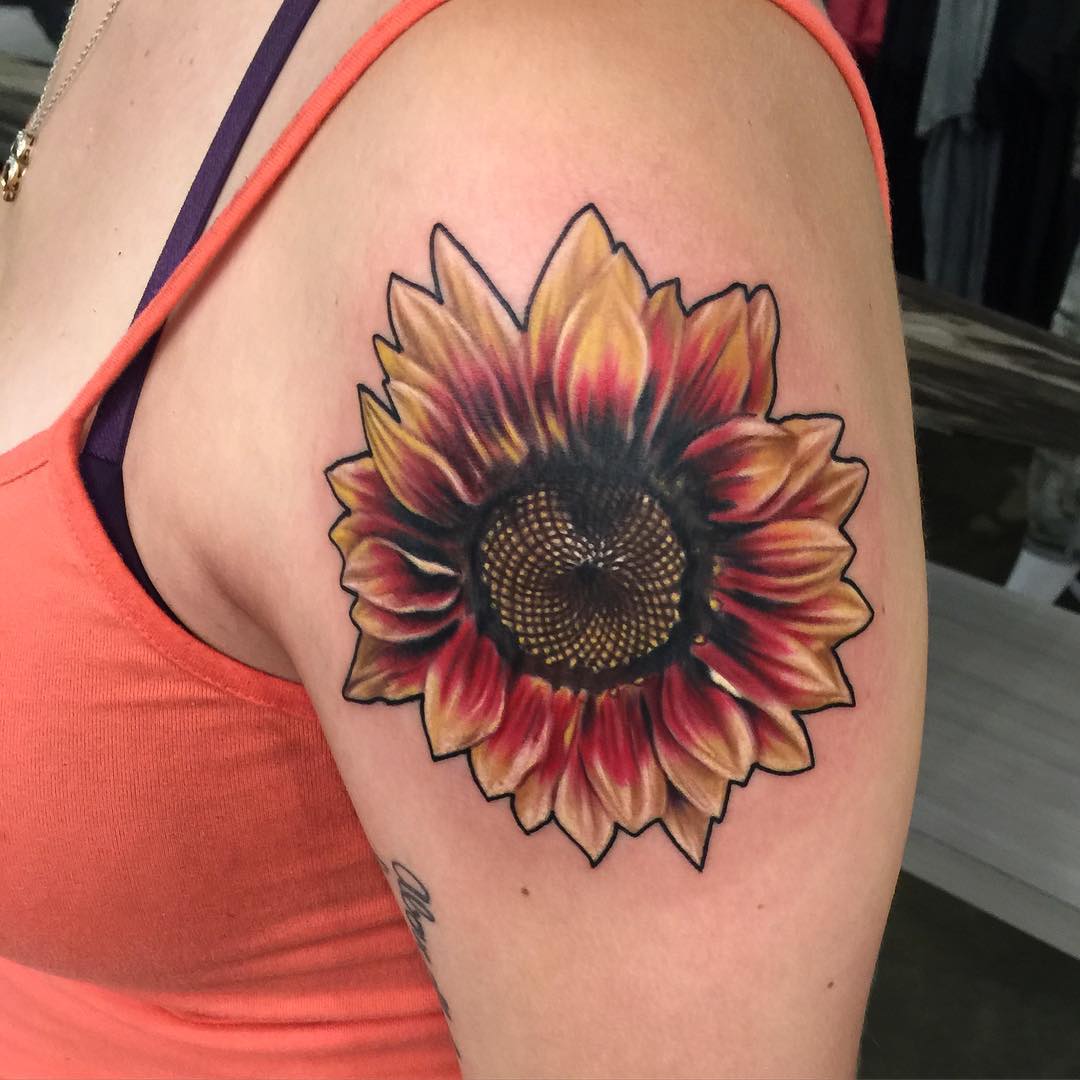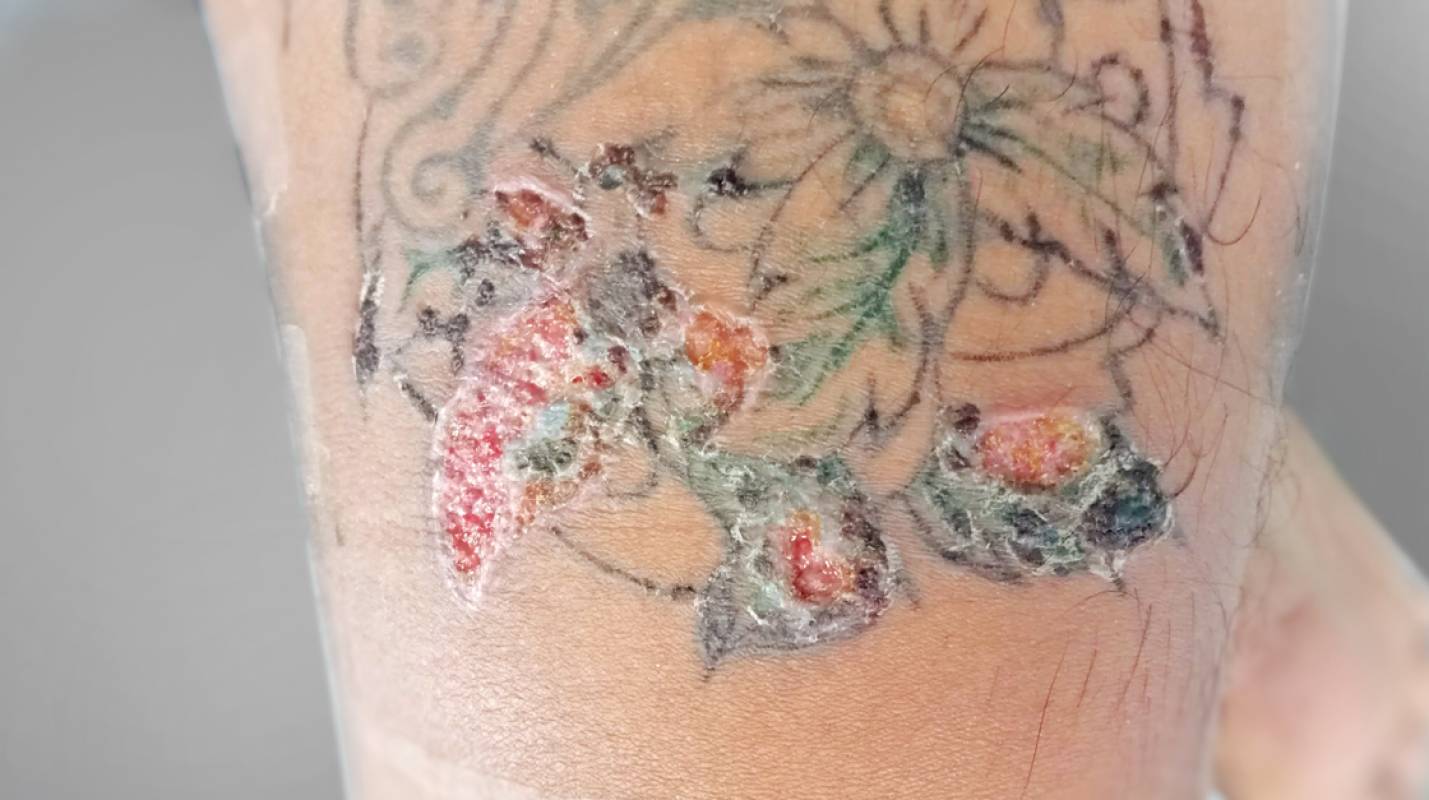
Okay, so you’re thinking about getting a sunflower tattoo.
But you’re also thinking, "Will it even show up on my skin?"
I get it.
Darker skin tones can be tricky with tattoos.
Some colors just fade into the background.
So, let’s talk about the best sunflower tattoo styles for dark skin tones that will actually pop.
Seriously, let’s get you that stunning sunflower ink!
Why Color Choice Matters (Especially for Us!)
Okay, first things first: color is EVERYTHING.
I’ve seen so many people with gorgeous dark skin get tattoos that just disappear after a few years.
The wrong colors can look muddy or just plain invisible.
Think about it like this: you’re painting on a canvas.
A dark canvas needs brighter, more contrasting colors.
Picking the Perfect Palette: Sunflower Tattoo Edition
So, what colors work best for sunflower tattoos on darker skin?
- Bold, Bright Yellows: Go for shades like lemon yellow or even a slightly neon yellow. These colors really stand out.
- Oranges and Golds: These create a warm, vibrant look that complements darker skin. Think sunset hues!
- Deep Browns and Blacks: Use these for outlining and shading. The contrast is key.
- Avoid Light Pastels: These tend to fade or look washed out on darker skin.
Sunflower Tattoo Styles That Slay on Dark Skin
Now, let’s talk about specific tattoo styles.
Some styles are just better suited for darker complexions.
- Outline Tattoos: These are super popular right now, and they can look amazing.
- Use a thick, bold black outline. This creates a strong contrast.
- You can leave the inside blank or add pops of bright yellow.
- Example: A friend of mine, Aisha, has a simple sunflower outline on her arm, and it looks incredible.
- Watercolor Tattoos (With a Twist): Watercolor tattoos can be delicate, but you can make them work!
- Use a darker base color (like a deep yellow or orange) to anchor the design.
- Add splashes of lighter colors on top.
- Important: Find an artist who specializes in watercolor tattoos on darker skin.
- Geometric Sunflower Tattoos: These are modern and eye-catching.
- Use bold lines and geometric shapes to create a unique design.
- You can incorporate negative space to let your skin tone shine through.
- Blackwork Sunflower Tattoos: This is my personal favorite!
- Blackwork is all about using solid black ink to create bold, graphic designs.
- A blackwork sunflower can be stunning on dark skin.
- Pro Tip: Add some dotwork shading for extra depth.
- Realism (But Be Careful): Realistic sunflower tattoos can be beautiful, but they require a skilled artist.
- Make sure your artist understands how colors will heal on your skin.
- Focus on using high-contrast shading to create depth.
Placement Matters Too!
Where you put your sunflower tattoo can also make a big difference.
- Areas with less sun exposure: Like your upper arm, back, or thigh, will help your tattoo stay vibrant longer.
- Consider the shape of your body: A sunflower can be placed to accentuate your curves.
Finding the Right Artist
This is crucial.
Do your research.
- Look for an artist with experience tattooing darker skin tones.
- Check their portfolio for examples of their work.
- Don’t be afraid to ask questions about their techniques and color choices.
- A good artist will be able to advise you on the best options for your skin.
Aftercare is Key!
Proper aftercare is essential for any tattoo, but it’s even more important for darker skin.
- Follow your artist’s instructions carefully.
- Keep your tattoo clean and moisturized.
- Avoid direct sunlight.
- Use a high-quality sunscreen to protect your tattoo from fading.
FAQ: Sunflower Tattoos on Dark Skin
- Will yellow ink fade quickly on dark skin? Yes, it can. That’s why it’s important to choose a bold, bright yellow and work with an experienced artist.
- Are white ink tattoos a good idea for dark skin? Generally, no. White ink often fades or disappears on darker skin tones.
- How can I make my sunflower tattoo last longer? Proper aftercare and sun protection are essential. Also, consider getting touch-ups every few years to keep the colors vibrant.
- What if I want a small, delicate sunflower tattoo? Focus on using strong outlines and high-contrast colors to make it stand out.
So, there you have it!
With the right colors, style, and artist, you can get a stunning sunflower tattoo that looks amazing on your dark skin.
Remember, the key is to choose bold, contrasting colors and find an artist who understands how tattoos heal on darker complexions.
Now go get that gorgeous sunflower tattoo you’ve been dreaming of!

















